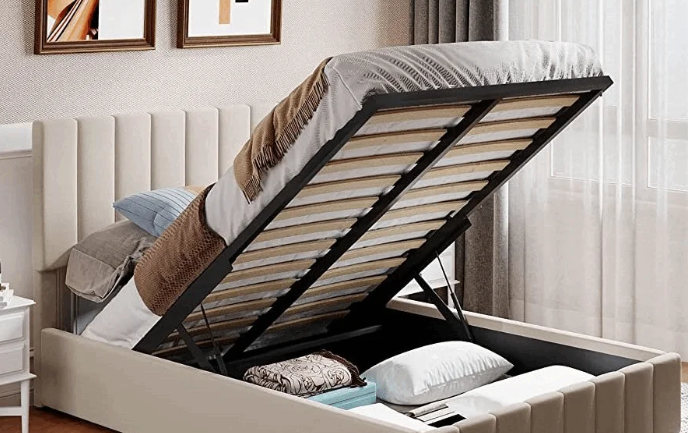The toilet rough-in measurement refers to the distance between the bathroom’s finished wall behind the toilet to the middle of the waste outlet or floor drain of the toilet. Most toilets have a standard rough-in of 12 inches, but you can find older homes that have an unusual rough-in size of 10″ or 14″. So, you need to take the time to measure to be sure that the toilet you purchase is compatible.
When measuring a toilet rough-in, you should measure from the finished wall and not from the baseboard or molding. By taking the rough-in measurements accurately, you won’t have to make unnecessary adjustments or return a toilet. If you can’t see the center of the drain when you already have a toilet in place, consider measuring from the wall to the center of the bolt caps.
Toilet Rough-in Measurements for a Rear Outlet Toilet
Rear-outlet toilets have a bit different configuration. Rather than waste coming out through the floor, it comes out through the bathroom wall. As a result, the rough-in measurement is the distance from the finished floor behind the toilet to the center of the waste outlet.
The 4 Dimensions You Need To Measure
Regardless of the toilet design you’re looking at, you need to know four things before roughing in the toilet:
- Distance from the back wall to the toilet flange
- Correct clearance from left to the right side of the toilet
- Amount of space to leave in front of the toilet bowl.
- Where to place the cold water supply line
Fortunately, it’s pretty easy to get these measurements right. Here is how to take these measurements like a pro:
- Distance To Install The Toilet Flange
Generally, you’ll want to set the middle of the water closet flange at least 12″ from the finished wall behind. And you shouldn’t measure from the bathroom base molding but from the finished wall. If you measure from stud walls, be sure to add in the thickness of the wall.
Most homeowners install 1/2″ drywall. So, if that’s the case with your bathroom, the measurement should be 12 1/2″ from a stud wall. Also, note that this measurement is for standard toilet systems with a 12″ rough-in. There are toilet units with 10-inch or 14-inch rough-ins.
So, if you notice the center of your flange measures only 10 inches from the wall, you need to get a water closet with a 10-inch rough-in instead of having to go through the hassle of shifting the flange.
- Clearance From the Center of the Toilet To Adjacent Fixtures or Sidewalls
The measurement between the center of a toilet and any adjacent fixture or sidewall should be at least 15 inches, but you can have more if you have a spacious bathroom.
For example:
- If vanity is next to your toilet unit, you’ll need 15″ of clearance.
- If a wall is next to your toilet system, you’ll need 15″ of clearance.
- If a bathtub is next to your toilet unit, you’ll need 15″ of clearance.
If you measure next to a stud wall, be sure to add in the thickness of your wall. So, if you’re installing 1/2″ drywall with 3/8″ mosaic tile and mortar of 1/8″, you’ll add a total thickness of 1″ to the 15″ minimum. In this example, the center of the flange would be at least 16 inches from the stud sidewall.
- The Distance From the Toilet Front to Any Obstruction
This third clearance typically depends on your local plumbing code. If your local jurisdiction adheres to the International Plumbing Code (IPC), you need at least 21″ of clearance. But if your plumbing code observes the Uniform Plumbing Code (UPC), you need 24 inches of clearance. The measurement is taken from the front edge of the toilet unit to any obstruction, such as:
- A Door
- Walls
- Another Plumbing Fixture
The purpose of this clearance is to create enough space for someone to use the toilet comfortably. And since people shut the door when using a toilet, this measurement doesn’t have to apply when the toilet is open.
- Where To Set Up The Cold Water Supply Line
You need to measure 6″ to the left of the center of the water closet flange and then come up 7″ above the finished floor. This is a perfect height because it provides adequate clearance for most sizes of base moldings. On many occasions, the water line comes in too low and needs notching of the trim, which turns out UGLY.
By allowing 7 inches above the finished floor, you’ll have enough clearance for an escutcheon, as well as the base trim all the way up to 5.25″.
So, that wraps it up for toilet rough-in measurements for any bathroom remodeling. Feel free to ask any questions in the comment box below, and we’ll be happy to clarify anything that didn’t come out clear.


